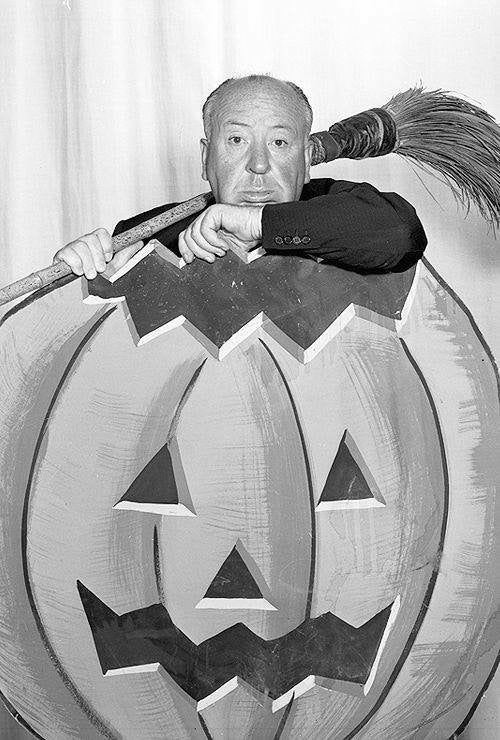
Alfred Hitchcock Presents (1958)
When it came to seasons’ greetings, the Beatles were front and center during their heyday when it came to providing holiday messages to their legions of loyal fans. Indeed, for seven consecutive years, the Beatles’ annual Christmas messages were distributed via their fan clubs in the United Kingdom and the United States, respectively, as Flexi-disc and cardboard record releases.
But when it came to Halloween, the Fab Four fell eerily silent, with nary a blood-curdling scream emanating from the familiar confines of Abbey Road. While the bandmates never shied away from costumery—who can forget their famous turn as knee sock-wearing Shakespearean players?—they were AWOL when it came to Trick or Treat.
Given their British heritage, this should hardly be surprising. While Halloween and its attendant revels continue to enjoy great popularity in North America, All Hallows’ Eve has been on the wane since around the time of the emergence of Guy Fawkes Night on the fifth of November 1605. Why bother with something as pedestrian as Halloween when you’ve got bonfires and the opportunity to burn your favorite hate-figures in effigy at your disposal?
In North America, Halloween has experienced mass popularity since the earliest years of the twentieth century. As the years wore on, Hollywood celebrities (see Hitchcock, Alfred) took up the orange banner, mid-century, bringing Halloween out of the spooky darkness and into the mainstream via the growing profundity of American television screens and drive-in movies.
While the Beatles may have opted not to afford their listeners with ghostly images of themselves in support of our annual ghoulish celebration, their music tells a very different story altogether. After years of recording one buoyant pop hit after another, their efforts in 1966 and beyond found the bandmates intentionally working the darker margins of human experience.
Take Revolver’s “Tomorrow Never Knows,” for example, in which John Lennon sings about the evocative experience of the death-drive against layers of disturbing tape loops and otherworldly sounds. And then there’s Sgt. Pepper’s Lonely Hearts Club Band’s “A Day in the Life,” in which the Beatles depict the sound of apocalypse with the sound of a runaway orchestra plunging headlong into the unsettling tones of an explosive E-major chord.
When it came to The White Album, the Beatles transformed the sound of dis-ease into all-out terror in such songs as “Helter Skelter” and the musique concrète of “Revolution 9.” In the latter, Paul McCartney’s screaming vocals are arrayed against a searing wall of wailing electric guitars, only to be felled, in the end, by the blood-curdling sound of Ringo Starr shouting, “I’ve got blisters on my fingers!” As for “Revolution 9,” there may be no more frightening moment on record—any record—than the sound of the eerily antiseptic spoken refrain, “number nine, number nine,” that serves as the experimental track’s bizarre introduction.
And to top it all off, the Beatles conclude their recording career with the brooding, bruising coda for “I Want You (She’s So Heavy),” which the bandmates completed on August 20, 1969, the last day in which John, Paul, George, and Ringo were in the studio together. With its Wagnerian outro comprised of Lennon and George Harrison’s sweltering, layered guitars and a swelling cacophony of white noise, the aural images of suspense and terror are finally broken by, of all things, a sudden and ineffable silence.
It may not be the bloody drool of Count Dracula or the menacing sight of a chainsaw-wielding madman, but the sound of the maelstrom of “I Want You (She’s So Heavy)” exploding into quietude is just about as frightening as it comes.
Ken Womack is an internationally renowned Beatles authority regarding the band’s enduring artistic influence. He is the author of Maximum Volume: The Life of Beatles Producer George Martin (The Early Years: 1926-1966). The second volume in the series, entitled Sound Pictures: The Life of Beatles Producer George Martin (The Later Years, 1966-2016), is forthcoming in 2018. His previous Beatles-related books include Long and Winding Roads: The Evolving Artistry of the Beatles and The Beatles Encyclopedia: Everything Fab Four. You can learn more about Ken’s work at kennethwomack.com.
